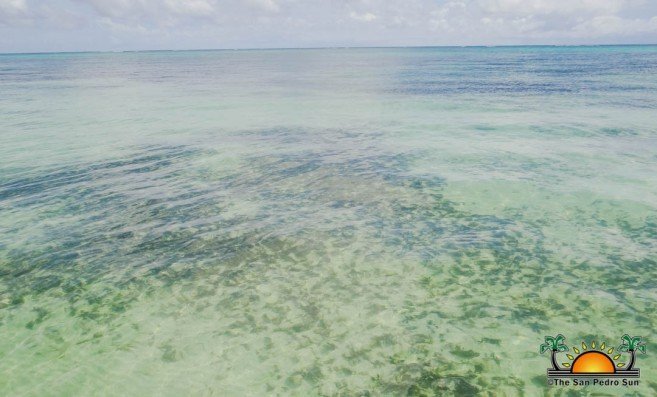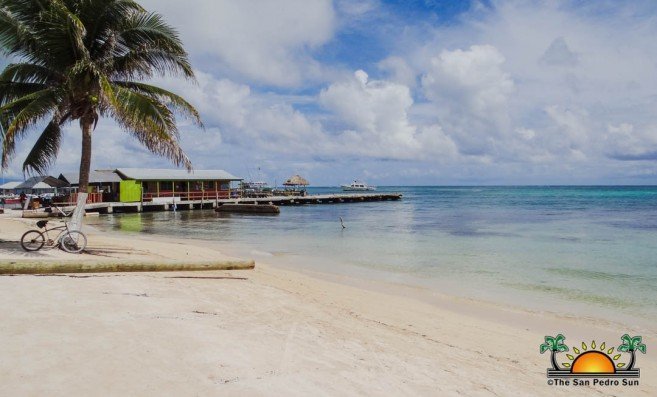Waves of Sargassum that washed up in large mats on the shores of many countries within the Caribbean, southern Mexico, and Belize, have significantly decreased, giving way to clear coastlines with beautiful sandy beaches. Ambergris Caye’s eastern coastline is once again showing off her sandy shoreline, making the island an ideal place to vacation once more. Sargassum season is known to be from April to August each year, but according to reports, it could start flooding the region as early as January 2020. The year 2019 has been one of the worst recorded for the seaweed invasion, and predictions for 2020 are uncertain as Mother Nature is quite unpredictable.
Nobody misses Sargassum, which releases a strong foul smell after it decays and creates dead zones near the shore. Personnel from the San Pedro’s Sanitation Department are happy with the seaweed’s disappearance. They say now that the Sargassum season is off they can save their energies and get ready for the upcoming influx in the months ahead. The sanitation crew reported removing tons of the seaweed in an attempt to clear the beaches for island residents and visitors alike.
According to Hol Chan Marine Reserve’s Executive Director Javier Paredes, the decrease of its presence is due to the change in the season, with the winds blowing in a south-eastern manner. The winds blow the seaweed away from the Belizean shores, but in late March, when the wind changes, we can expect Sargassum on our beaches. At this moment, it is uncertain its impact, but he believes that if global warming and the runoff of nutrients into waterways continue to increase, the blooms of Sargassum could be greater.
According to satellite imagery, most of the Sargassum affecting the Caribbean, Southern Mexico, and Belize is growing between the coast of Africa and Brazil. This is according to Dr. Brian Lapointe at the Florida Atlantic University in the United States of America. This area has been dubbed as the Great Atlantic Sargassum Belt and is rich in nutrients originating from run-off from the Amazon River in South America. Another factor that is helping Sargassum to grow uncontrollably is the fact that there are certain parts of the ocean, which are with nutritious water rising from the seafloor, contributing to the rapid growth of the algae.
While the effect of Sargassum bloom for next year is unknown, a Sargassum Taskforce in the country has been following its cycles. According to this group, they believe that the invasion of this seaweed is no longer a phenomenon but an annual mainstay in the region with two established peak periods (January-February and August-September). Since the return of the seaweed in imminent, the task force has suggested a couple of ideas on how to deal with the future problem. They appeal for the strengthening of local governances in the areas most affected maintain the presence of financial relief for coastal hotel properties and municipal bodies based on actual Sargassum conditions. The Sargassum Task Force also recommended the tax relief provided via the Hotel Tax (9%) from the Ministry of Tourism to be extended to 2020 at a rate of 0%, 1% and 2% depending on the level of the Sargassum level. This tax relief was introduced in October 2018 with an amount of $1.5 million to help contain the seaweed infestation. These funds were designated to the coastal communities of San Pedro Town, Caye Caulker Village, Placencia Village, and Hopkins Village. The financial assistance was distributed via the Belize Tourism Board.
On Ambergris Caye, some resorts along the eastern coast of Ambergris Caye have equipped themselves with floating barriers (booms) to contain the seaweed. According to them, it is working to minimize the amount of algae from reaching their beachfront properties.
Another strategy islanders have employed to get rid of the smelly marine plant is by using it as landfill. However, this method is not considered safe or healthy. Medical experts in the past have warned of the health hazards the stench can cause as it decays. Decaying Sargassum is known to produce hydrogen sulphide and bacteria that can result in mild health complications.
In the meantime, Belizeans and visitors can enjoy clean and white sandy beaches free of Sargassum for the next couple of months. As much as people may want the total disappearance of Sargassum, according to scientists, it is very important for the survival of certain marine species. The seaweed provides shelter and food for fish species, crustaceans, and even turtles.

Share
Read more

